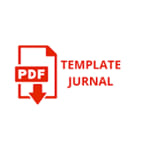STATE POWER FROM THE PERSPECTIVE OF CONTEMPORARY POLITICAL FIQH
Abstract
Abstract:
This article discusses authorities and powers in the state from the perspective of contemporary Islamic jurisprudence, with an emphasis on the concept of tris politica, namely judicial power, executive power, and judicial power. The sources of data or information in this discussion are the Al-Quran, Hadith, and the opinions of ulama, which are analyzed using the usul al-fiqh method with an emphasis on maqâsid al-sharî’ah (the objective of shariah). These three types of authority have been mentioned in the Al-Quran and Hadith, although it is not stated explicitly whether they are integrated, separate, or distributed. In the current context, distribution or separation of power is very significant to create checks and balances and to avoid an authoritarian political system. Most ulamas and Muslim intellectuals currently support the existence of a legislative body by revitalizing the practice of deliberation (al-shûrâ) which was in the past time developed into the ahl hall wa al-‘aqd institution. The executive body in an Islamic state consists of officials whose job is to carry out public affairs based on Islamic law. Executive leadership selection should ideally be carried out through direct election by the people or by parliament as the people’s representative institution. Meanwhile, the judicial body was built to uphold justice and eliminate injustice committed by the government or citizens. Judicial power together with executive and legislative powers that are consistently practiced are the pillars of a shûrâ or democratic system that is capable of achieving full justice for all without discrimination.
Keywords: caliph, ahl hall wa al-‘aqd, legislative power, executive power, judicial power.
Full Text:
PDF (Indonesian)DOI: http://dx.doi.org/10.30821/as-sais.v9i2.20035
Refbacks
- There are currently no refbacks.
INDEXED BY:
As-Sais (Jurnal Hukum Tata Negara/Siyasah)
Ciptaan disebarluaskan di bawah Lisensi Creative Commons Atribusi 4.0 Internasional.





